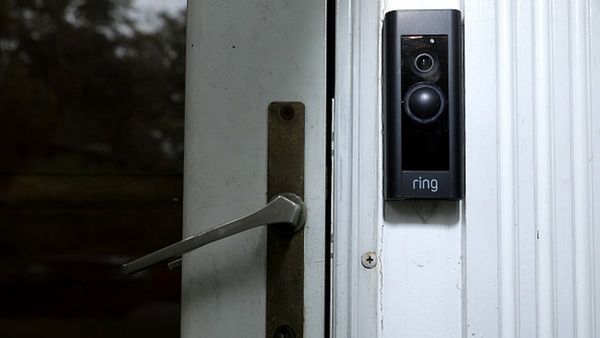
NISHINOMIYA/TAKARAZUKA, Hyogo -- I stepped on the gravel with a flashlight in my hand, and saw a red iron bridge. This is the former site of the Fukuchiyama Line of the now-defunct Japanese National Railways.
Once off-limits, the site was opened to the public nearly three years ago in November 2016. The deserted railway course is now a popular route attracting around 2,000 visitors a day during the autumn peak. I took a leisurely walk for about two hours before the hiking season began.

Walking in the dark
Approaching the entrance of a tunnel, I felt cold air flowing past. Inside it was cooler and a flashlight was a must. Walking in complete darkness is a rare experience.
The 5-kilometer route is located along the Mukogawa river between the current JR stations of Namaze and Takedao. There are six tunnels and an iron bridge.

The line was built in 1899 as a part of the Hankaku Railway to connect Osaka and Maizuru, Kyoto Prefecture, and nationalized after eight years. But it was discontinued in 1986 when a new route was opened with an electrified, double-tracked line.
A dam construction project was planned along the Mukogawa river, but it was scrapped in 2011. After that, civic groups called on West Japan Railway Co. and others to open the site to the public. It was opened, with such precautions as the installation of a wooden bridge and a signboard saying, "Take the utmost care on your own responsibility."
One of the groups was the Association for the 21st Century of the Mukogawa River, which was launched in 1999 under the slogan "For comprehensive water control without dams." The association published a hiking guide of the abandoned line two years ago.

"I always thought it was a shame that children couldn't see the beautiful scenery and railway remains from the Meiji [1868-1912] and Taisho [1912-1926] eras," said Naoto Kirifuji, 73, a former junior high school teacher who edited the book.
"I want them to know the history and culture of the surrounding area," Kirifuji said.
U.S. steel said to be used
I walked from Nishinomiyanajio Station to the start of the abandoned track. After a while, I saw the first arch of Kitayama Tunnel No. 1. According to the association's measurements, it's 318 meters long. Walking silently, I found it interesting that I could see the light from the exit in front of me.
I couldn't find them, but it's said that rails engraved with the words "HANKAKU," "CARNEGIE" and "1896" were used in the iron fences. Hankaku Railway apparently used rails imported from Carnegie Steel Co. in the United States, manufactured in 1896.
Next was Kitayama Tunnel No. 2, the longest of all at 414 meters. Going over it, I saw a swift current on the side called Mizotaki waterfall. A lot of sweetfish are said to have been caught there in the past and shipped to Arima, a famous hot spring area in Kobe.
And coming out of the third tunnel, the 150-meter long Mizotakio Tunnel, I could see the red Mukogawa Bridge No. 2. It was a great place to take pictures.
'Dr. Sakura's' forest
After passing through another tunnel, I neared the Ekiraku Sanso research forest where cherry blossoms were studied. Well-known sakura scientist Shintaro Sasabe (1887-1978) grew and studied Yamazakura and Satozakura varieties there. The area is now open to the public as a cherry blossom garden.
"Sasabe bought a sweetfish sushi bento box at Namaze Station and got off at Takedao Station. He had special permission to walk along the tracks to Ekiraku Sanso, where he ate his lunch and worked," said Hidemasa Yamauchi, 71, who described many of Sasabe's activities in the hiking guide.
Yamauchi, a former junior and senior high school teacher, said, "I hope people can see various kinds of cherry blossoms."
Trips to enjoy deserted railroads have been popular in various places. This site, however, has an especially large number of things to see. It will start to get crowded as the autumn leaves change. I'm looking forward to spring too.
ACCESS
The south entrance to the site is a 15-minute walk from JR Namaze Station or Nishinomiyanajio Station. The north entrance is also 15 minutes on foot from Takedao Station. At each entrance there are JR signs urging visitors to take precautions. Visitors must be on guard against falling rocks, fallen trees and slippery spots. There is no bathroom on the route. You can find a map on the Nishinomiya Tourism Association website.
Read more from The Japan News at https://japannews.yomiuri.co.jp/







